
A rapidly-intensifying storm is expected to bring heavy snow, blizzard conditions, and icing from the Upper Midwest through the Great Lakes and Northeast. Scattered severe thunderstorms may produce severe/damaging wind gusts and a couple of tornadoes across parts of the Midwest and lower Ohio Valley through the evening. Arctic air will expand across the central and southern U.S.. Read More >

| Tornado Information | |
| A complete historical tornado record dates back to 1950, though there are sparse reports of tornadoes prior. Interestingly, the number of tornado reports did not substantially increase during the 1980-2009 period over the 1950-1979 period despite increasing education and awareness. Many reasons could account for this, including a vast unpopulated area, and rare tornado occurrences across western New Mexico. For the 30-year period ending in 2024, an average of 9 tornadoes occurred in New Mexico each year, and most were across the eastern plains. However, there has been considerable year-to-year variability. Most New Mexico tornadoes are relatively weak, and occurred in the afternoon and evening hours in the spring months. However, tornadoes can occur at any time. The graphs below illustrate New Mexico's tornado history. Please note: F? and EF? indicate an unknown F-Scale or EF-Scale, respectively. Click on any image for a larger version. For more information on the change from the F-Scale to the EF-Scale, please visit the EF-Scale webpage. | |
| Tornado Events by F/EF-Scale | Tornado Events by Hour |
 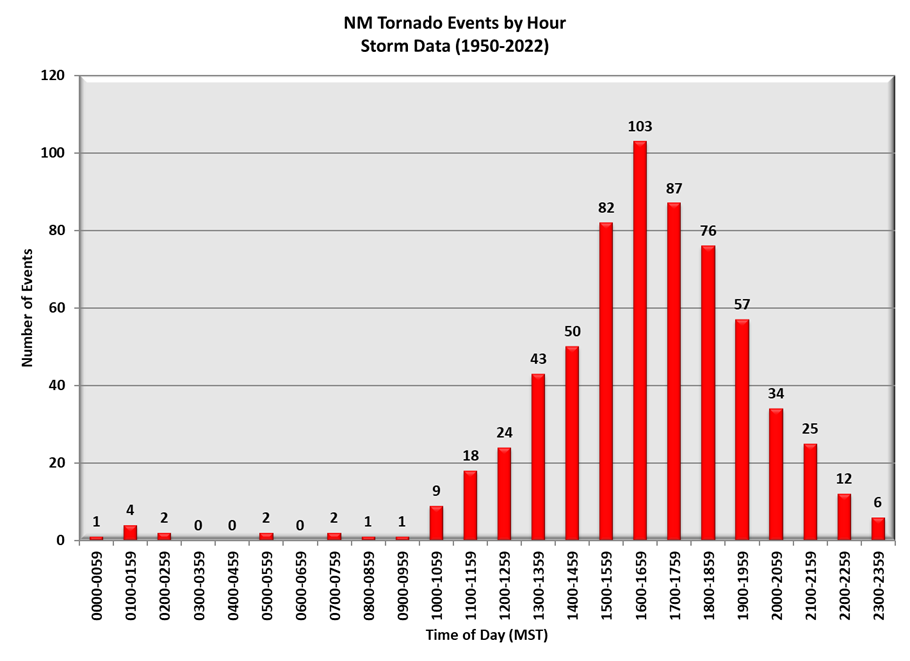 |
|
| Tornado Events by Month | Tornado Events by Year |
  |
|
| Tornado Events by County | Tornado Fatalities/Injuries by F/EF-Scale |
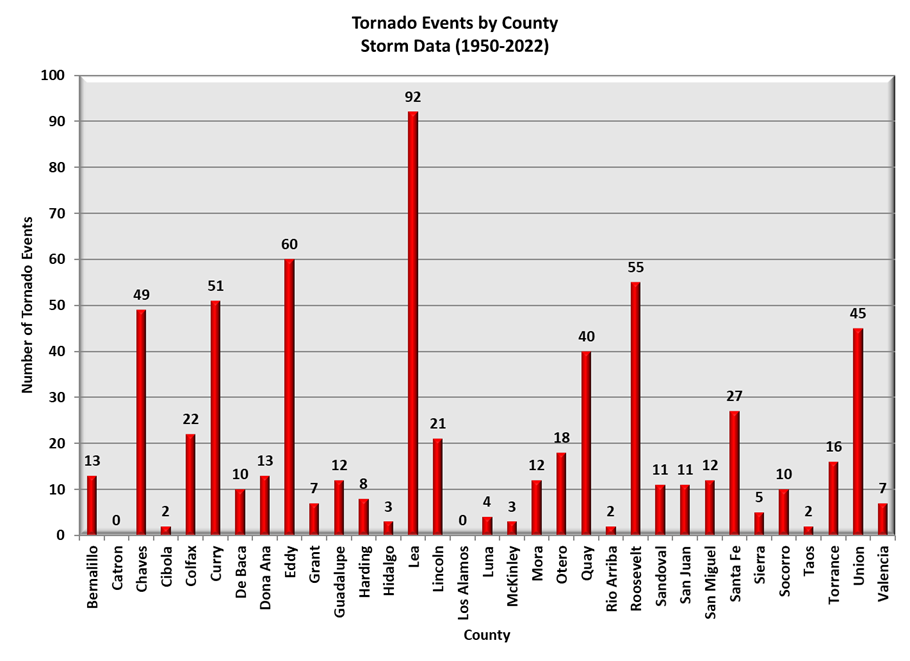  |
|
| Top 10 Deadliest/Injurious NM Tornadoes Since 1950 | |
| Detailed Listing of NM Tornadoes | |
| Hail Information | |
| Unlike tornadoes, the number of severe hail reports in New Mexico have greatly increased over the climatological 30-year period. Between 1955 and 1979, the average number of hail reports per year was 11, whereas, between 1980 and 2009, the average number of hail reports is 99. The jump in reports largely occurred after the WSR-88D was installed and forecasters could better narrow down an area to search for hail reports. For the 10-year period ending in 2024, the average number of severe hail reports per year rose to 150. Prior to January 5, 2010, severe hail was categorized as anything 0.75" or greater, or roughly hail the size of a penny or larger. For consistency, the graphs below include hail greater than or equal to 0.75" through 2024. Click on any graph for a larger version. |
|
| Hail Events by Size | Hail Events by Hour |
 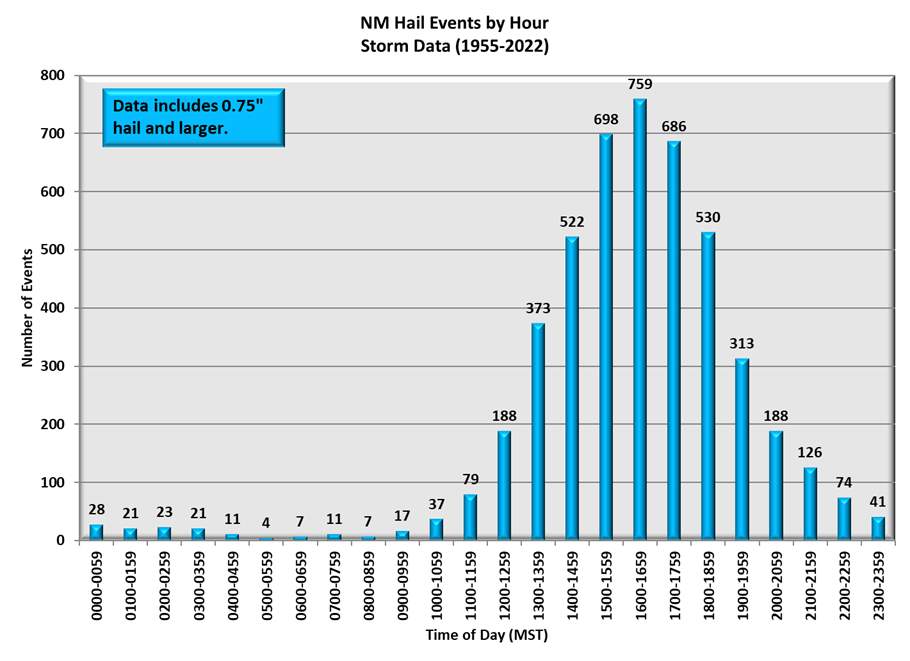 |
|
| Hail Events by Month | Bernalillo County Hail Events |
 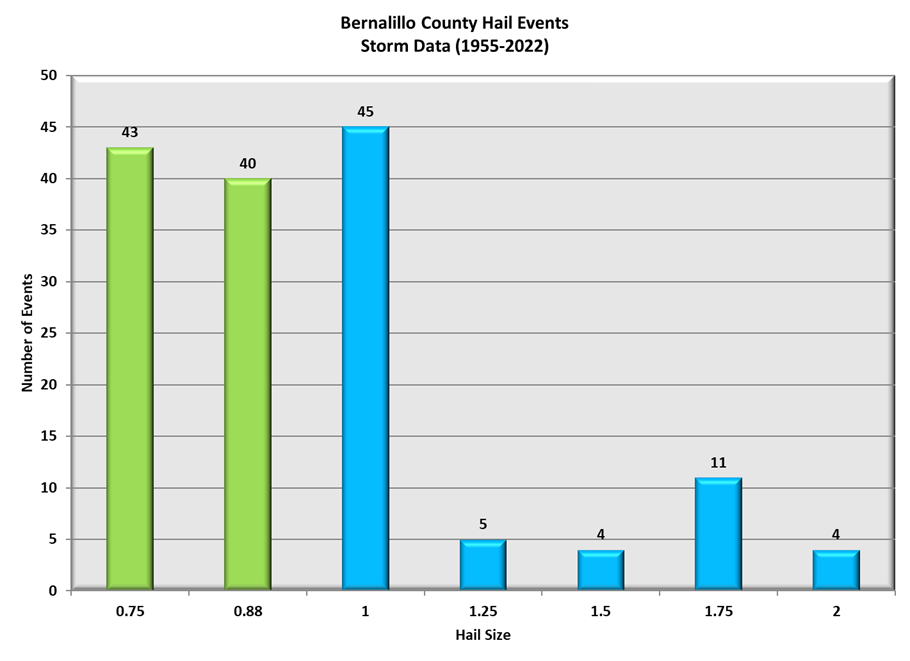 |
|
| Hail Events by County | |
|
Percentage of Hail Events by County Hail Distributions by Size and County Individual County Based Climatology of Large Hail Hail Distributions by Month and County Hail Distributions by Season and County
|
|
| Severe Thunderstorm Wind Gust Information | |
| Severe thunderstorm winds include gusts greater than or equal to 58 mph (or 50KT). Many of these gusts are estimated by trained spotters since anemometers are not installed everywhere that storms occur. Between 1979 and 2009, an average of 26 thunderstorm wind events were reported. However, for the 10 year period ending in 2024, an average of 84 thunderstorm wind events have been reported. Click on a graph below for a larger version. | |
| Thunderstorm Wind Events by Hour | Thunderstorm Wind Events by Month |
 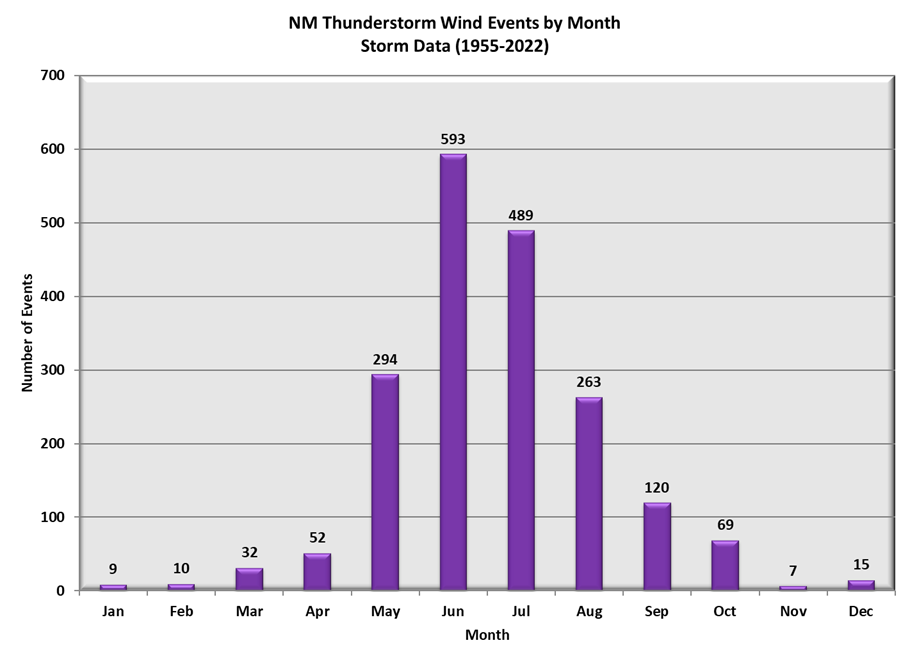 |
|
| Thunderstorm Wind Events by County | |
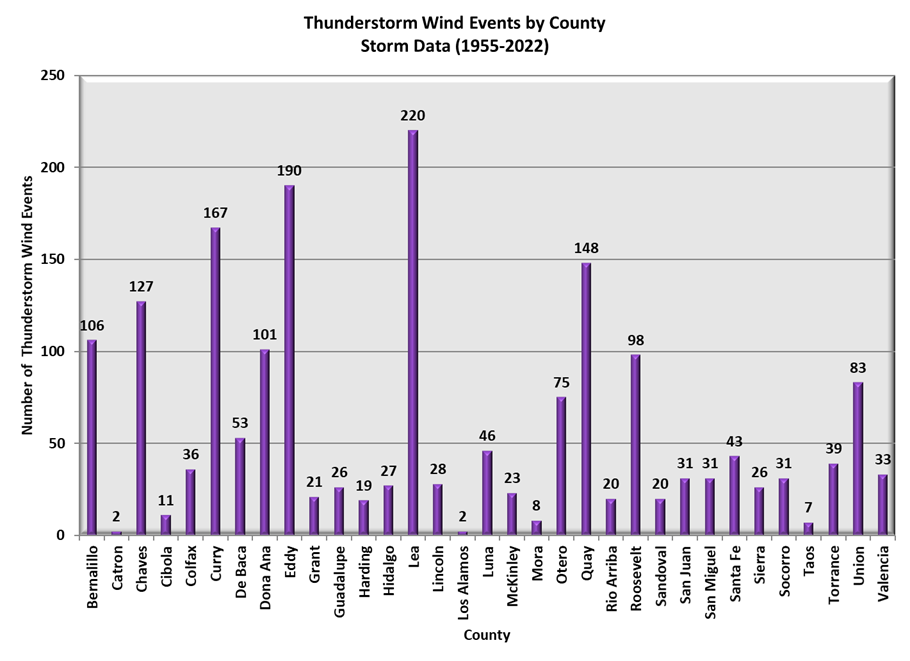 |
|
| Flash Flooding Information | |
| Flash flooding is most common in the summer months during the monsoon. In fact, two-thirds of flash floods occur in the month of July and August alone. Flash flooding is very dangerous and deceptive because flash flooding can occur in areas where it didn't rain. Click on the graphs below for a larger version. | |
| Flash Flood Events by Hour | Flash Flood Events by Month |
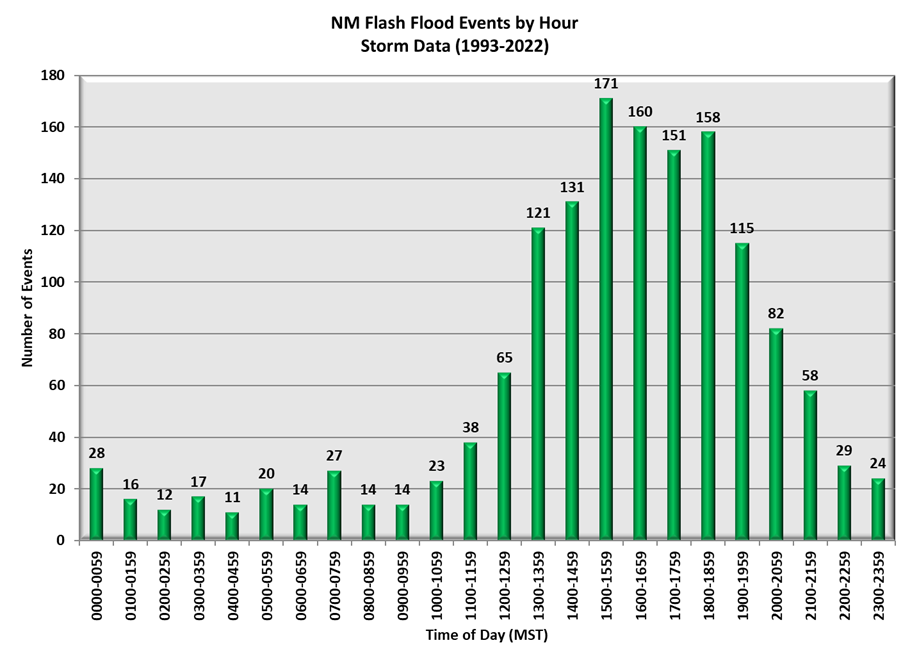  |
|
| Flash Flood Events by County | |
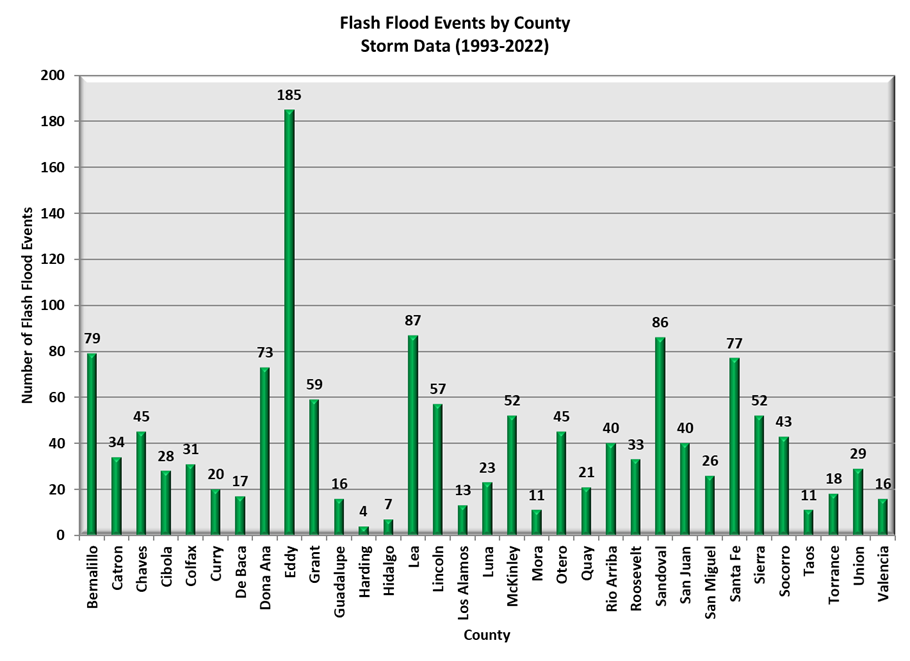 |
|
| Fatalities/Injuries | |
| Most weather related fatalities and injuries can be avoided if the proper precautions are taken. Next to lightning, injuries due to a tornado are most common, though 100 of those injuries occurred in only 4 events. In other words, there are many tornadoes that occur that cause no fatalities or injuries. However, in most of these cases the tornado occurs over open rangeland. In general, the chance of tornado injuries and fatalities increase as tornado strength increases (see above). Most fatalities occur with lightning, though flash flooding is a close 2nd. Lightning fatalities generally occur with the first or last strike in a storm, when people outside are unaware that a storm is approaching, or return to their outside activities before the storm has completely exited the area. Click on the graph below for more statistics. | |
| Fatalities and Injuries by Event Type | |
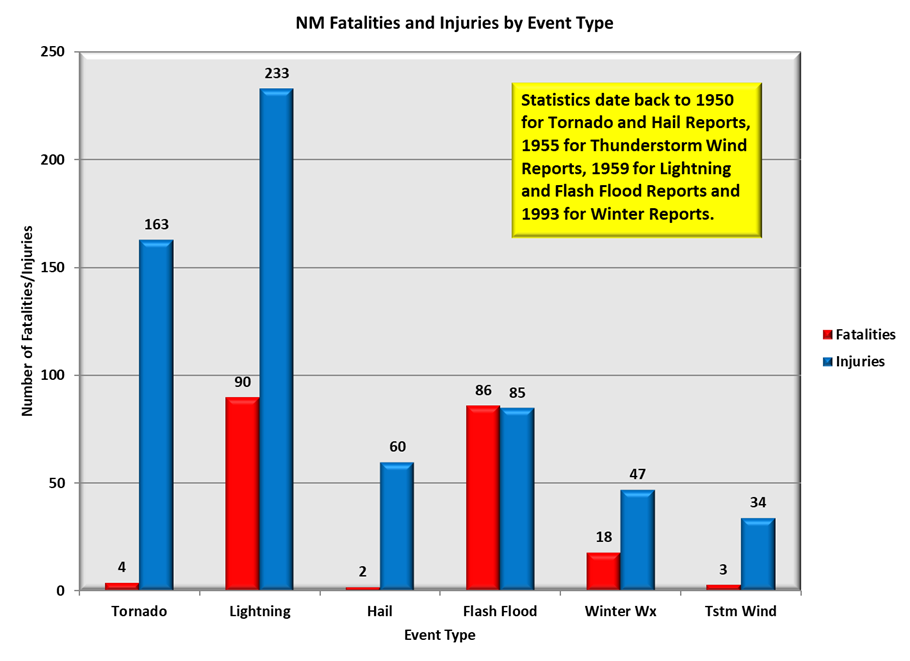 |
|